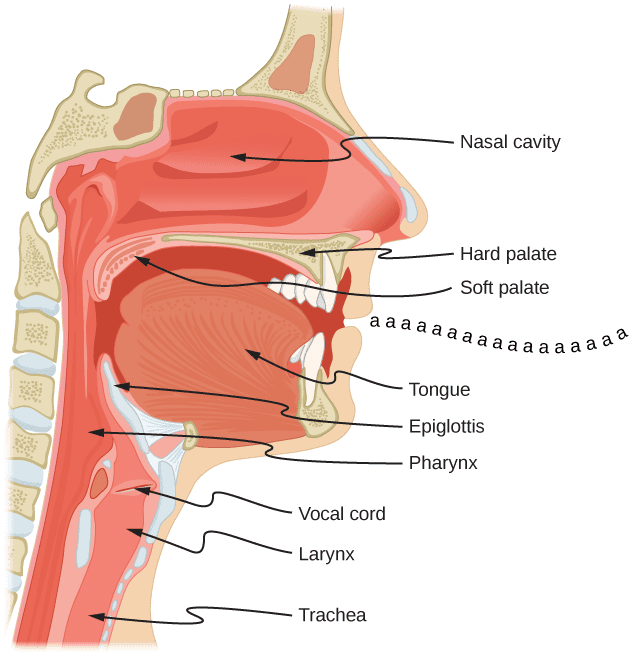Tired of Straining Your Voice? Use More Physicality.
As a voice coach who’s trained everyone from beginners to Grammy winning voice actors, I’ve noticed one thing that always holds true: voice acting physicality makes all the difference – the best voice actors don’t just use their vocal cords—they use their entire bodies. Using physicality is so important to an extended voice acting career.
Your Body and Voice Work Together
Here’s what many new voice actors don’t realize: your voice doesn’t work on its own. Your entire body affects how you sound. When I work with students who struggle to create different character voices, the problem usually isn’t their voice technique. It’s that they’re not using their bodies and facial structure.
Think about it this way: your voice comes from a team of muscles, tissue and nerves that all work together. Your larynx (voice box) position, facial tension, breathing support, and even how you stand all change the sound that comes out of your mouth. The larynx is that bump you can feel in the front of your throat that moves up and down when you swallow—it houses your vocal cords and is essential for voice production.

How Your Body Creates New Voices
When you watch professional voice actors in the recording booth, you’ll notice they don’t just change how they speak—their whole bodies transform:
- For a deep, powerful voice: They sometimes stand tall with an open chest and relaxed throat
- For a nervous, high-status character: They often raise their shoulders, lift their chin, and tighten their upper face
- For a rough villain voice: They change their throat position, jaw placement, and very often facial expression
These physical changes aren’t just for show—they actually create the conditions needed for your voice to transform.
Try These 5 Voice Acting Physicality Techniques in Your Next Session
Here are five simple ways to use your body in your next voice acting session:
1. Create a “Character Body” for Each Voice
Before you think about the voice, decide how the character stands and holds tension in their body. Take notes or photos so you can quickly get back into character.
2. Use a Mirror
Practice switching body positions between characters in front of a mirror. Watch how your face, posture, and body language change. This visual feedback helps connect your body and voice.
3. Change Where You Breathe From
Where does your character’s breath come from? High in the chest for nervous characters? Low in the belly for confident ones? Changing your breathing instantly changes your voice.
4. Use Hand Movements
Even in the booth, using your hands can trigger voice changes. A character who points confidently speaks differently than one who fidgets nervously.
5. Create Physical “Anchors”
Develop a specific way of standing or a hand position for each character. These physical voice acting techniques gives you a quick way to jump back into that character’s voice, even during complex dialogues.
The Benefits You’ll Notice
When my students fully embrace using their bodies, several things happen naturally:
- Less voice strain because they’re using their whole body, not just pushing from the throat
- Character voices become more distinct without having to think so hard
- Performances sound more genuine and believable
- Voice stamina lasts much longer
- Directors spend less time asking for technical voice adjustments
Remember: in voice acting, you’re not just creating a voice. You’re creating a complete character who expresses themselves through voice. When your whole body commits to the character, your audience won’t hear someone doing a funny voice—they’ll hear a real character.
Your body already knows how to create amazing voices. Your job is to let that natural voice acting physicality shine through.
Still need more help? Send me a message for a free 15 minute consultation!
